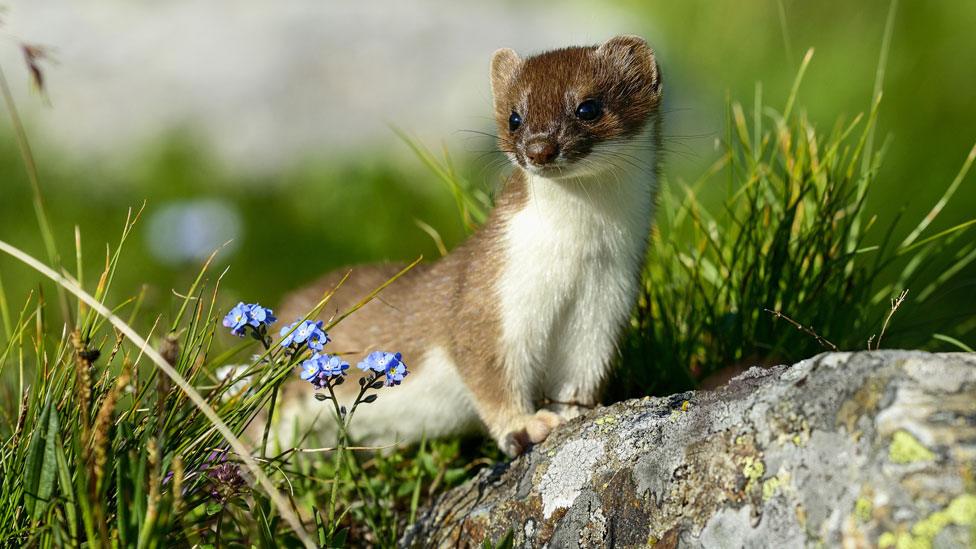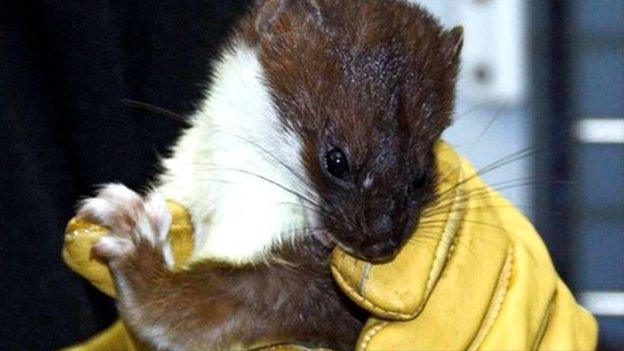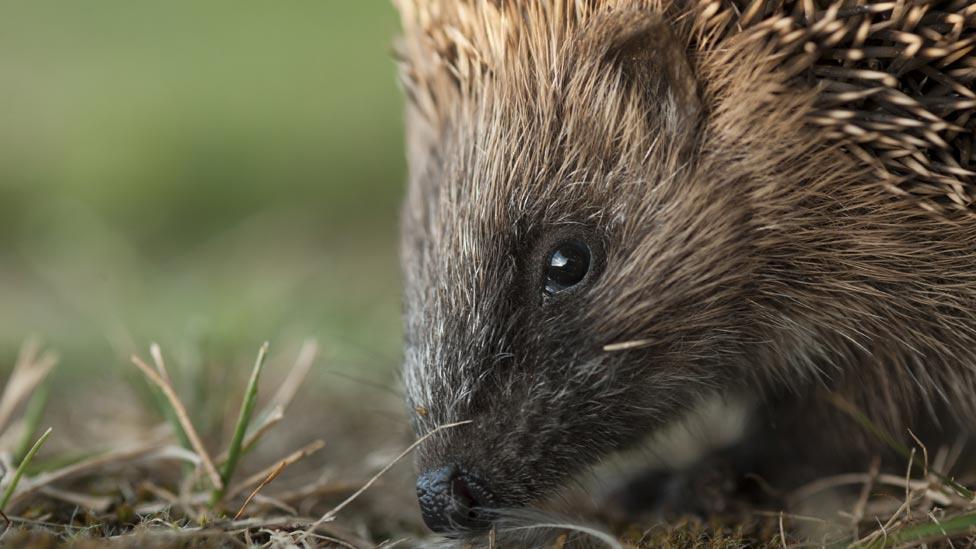Western Isles mink work to guide Orkney stoat removal
- Published

Stoats are not native to Orkney and hunt voles, a key source of food for the islands' birds of prey
A project to eradicate mink from the Western Isles will guide an effort to control stoats in the Orkney islands, Scottish Natural Heritage has said.
Work to trap and kill American mink on the isles, including Harris and the Uists, began 15 years ago and has "dramatically reduced" their number.
Stoats are not native to Orkney and hunt voles, a key source of food for endangered birds of prey.
SNH has begun recruiting stoat trappers across the islands.
Control rabbits
In its latest online magazine, the agency said the Orkney project would "draw on the experience" of the Hebridean Mink Project, which has now entered its final stages.
Hundreds of mink, descendants of animals that escaped into the wild from fur farms, have been trapped at a cost of about £4.5m.
SNH, along with other public bodies and conservation charities, have funded the work designed to protect ground-nesting birds from the predator.
It is believed stoats first arrived in Orkney from the Scottish mainland by accident in deliveries of hay or straw for farmers.
Another theory is that they were illegally released to control rabbits.
Conservationists were alerted to the presence of stoats in 2010 and there was an effort to trap them humanely and release them on the mainland.
However, SNH said eradication had emerged as the most effect solution because of the large number of stoats and the threat they pose to hen harriers and short-eared owls, which hunt voles, and also to ground-nesting birds.
- Published2 November 2015

- Published16 June 2014
